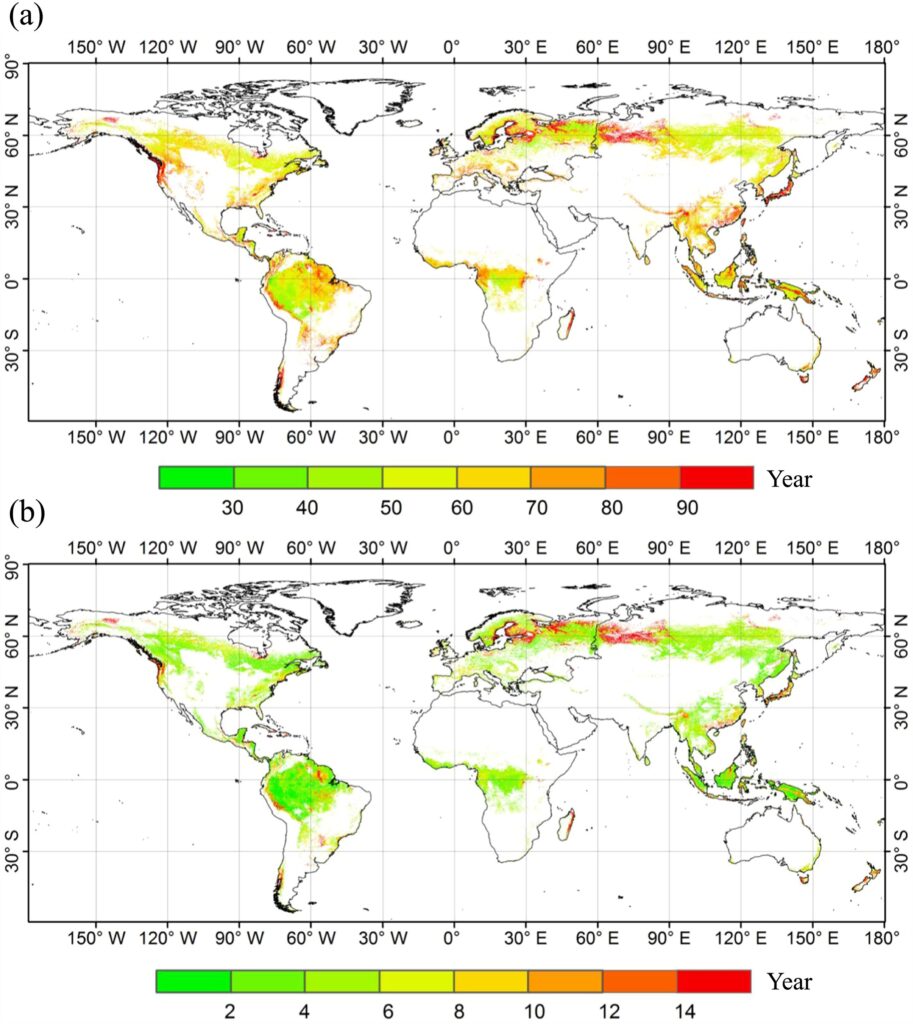

Global forest woody residence time by random forest method
Woody residence time is an important parameter that expresses the balance between mature forest recruitment/growth and mortality. Using field data collected from the literature, our group explored the global forest τw and investigated its influence on model simulations of aboveground biomass (AGB) at a global scale. We estimated the global 1 km τw using a random forest method by integrating the field based data, precipitation, Gross Primary Productivity, temperature, DEM and evapotranspiration as predictors. The estimated forest τw was averaged 66.7 years globally with large spatial heterogeneity. The estimation of τw can help improve the model simulations and reduce the parameter’s uncertainty over the projection of future AGB in the current DGVM or Earth System Models.
Field collected forest woody residence time (τw, years)
Plot level woody residence time were collected from published literature. The Excel file() contains overall 1319 plots data with corresponding biotic and abiotic variables. These variables include: Aboveground Biomass (AGB, Mg DM ha-1), woody productivity (Mg DM ha-1year-1), forest age (Age, years), Gross Primary Productivity (GPP, gCm-2year-1), total NPP(gCm-2year-1), carbon use efficiency(CUE), precipitation(Prep, mm year-1), temperature (℃), evapotranspiration (mm year-1) and DEM (m).
Reference
Xue, B. L. , Guo, Q. , Hu, T. , Xiao, J. , Yang, Y. , & Wang, G. , et al. (2017). Global patterns of woody residence time and its influence on model simulation of aboveground biomass. Global Biogeochemical Cycles.